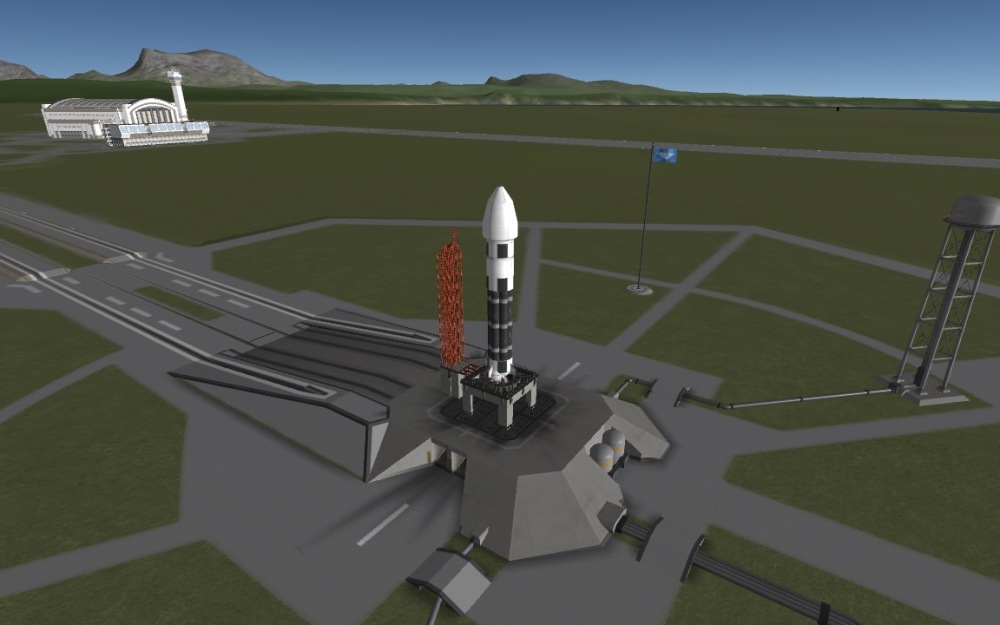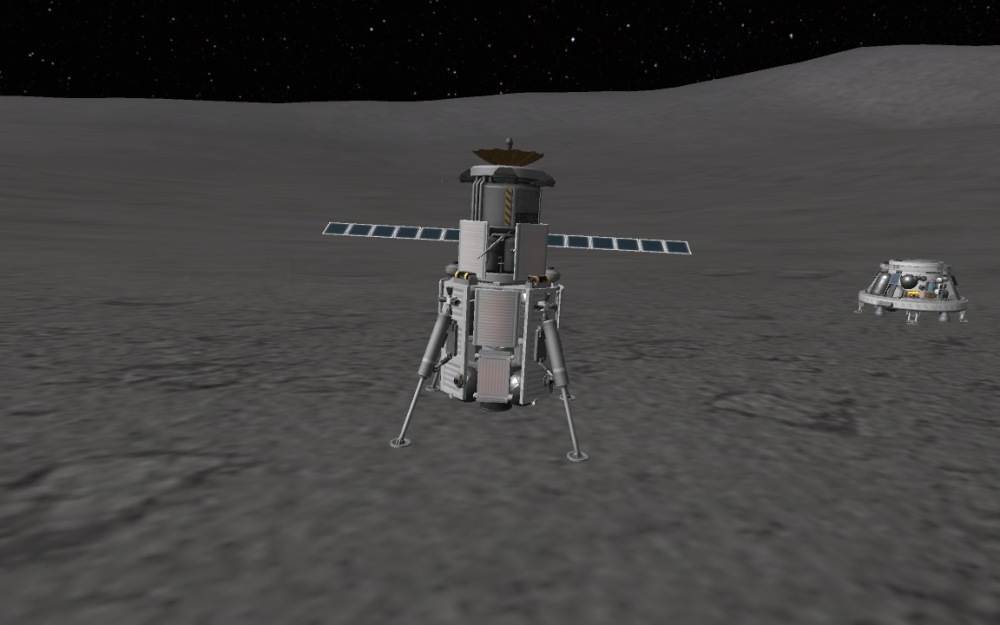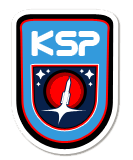
The exploration council had put out the call for a new heavy-lift vehicle and the Kerbia Design Bureau had answered. The L200B Freya class rocket was an interesting design. It took 7 core stages of the Wodan and paired them off with a new wider model of the fuel tank.
It featured the same engines as on the Super Thor but in a different configuration. For example, the first stage had two mainsail engines, giving it plenty of thrust, all the way up, which would be more than usual, given the huge fuel reserves.
The second stage featured a single Skipper, providing enough thrust for circularisation of large payloads or injections into Mun or Minmus orbit. Today’s flight made a slingshot around the Mun, to shave off some delta-v and would get into orbit 7 days later.
The payload was the first segment of permanent residence on the Mun. L201A Base 01 was designed with a crew of three and together with the Delver’s fusion reactor, it should be possible to stay on the Mun for a long time. Backup fuel cells could burn off de remained of the descent fuel.
After Freya had initiated a free fall to the surface it attached and that was when engineers discovered the lack of RCS or stabilization wheels. The only way to adjust the orientation of the craft was the differential thrust of its 4 engines.

As a result, it overshot its LZ but to everyone’s surprise it landed safely a little over 5km from the target zone. Losing one food supply container in the process.
The automated deployment started unfolding the base components and the mission was still a great success. But the distance from the reactor would mean that systems could not run overnight.

To overcome that issue, the team started looking at the Delver probe. It had successfully demonstrated that it would be possible to create fuel on the Mun which would help to power rockets and fuel cells for longer stays. It had also refueled the descent stage, so perhaps….
Being unable to dump surplus ore, the craft had become very difficult to fly and keep balanced. To add to that the time delay to KSC made flying not easier. But ultimately they managed a small jump in the right direction, the fuel was however very limited.
The team picked a flat terrain and smashed the craft back down. 126 meters from the base. In doing they tore all the solar panels apart which meant the unit was now running on fusion power only. On the other hand, they could see the base on the cams now they just had to figure out, how to bridge 126 meters.













